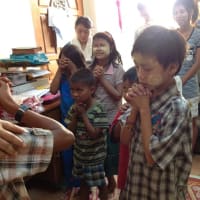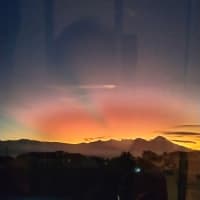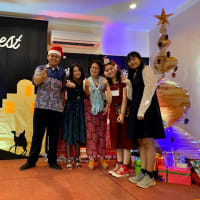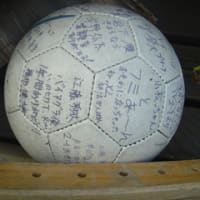
やまとうたは
人の心をたねとして
よろづのことのは
とぞなれりける
万葉集の名前の由来となっている歌
「古今和歌集」より
NHK教育テレビをザッピングしていたら表題の番組を見つけました。
5分間の短い放送なので、早速録画して2月27日の放送をながめると
春の花 今は盛りに にほふらむ 折りてかざさむ 手力もがも
大伴家持 (巻17・3965)
春の花は今を盛りと咲き匂っていることだろう
手折って髪に挿す力が欲しいものだ
NHKオンライン
菜の花のいっぱいに広がる画面で、壇ふみさんが読むこの歌が好きになりました。
万葉仮名:漢字の意味とは関係なく、漢字の音訓だけを借用して日本語を表記しようとしたもの。
漢字を用いながらも、日本人による日本人のための最初の文字.
万葉集に由来する名前 :
万葉線 (富山県高岡市・射水市にある路面電車)
万葉まほろば線(奈良県にある西日本旅客鉄道桜井線の愛称) wikiより
中国語の解説
萬葉集维基百科,自由的百科全书跳转到: 导航, 搜索
額田姬王,《萬葉集》第一卷《萬葉集》是現存最早的日語詩歌總集,收錄由四世紀至八世紀4,500多首長歌、短歌,共計二十卷,按內容分為雜歌、相聞、挽歌等
Manyōshū ( manyōshū?, "Collection of Ten Thousand Leaves") is the oldest existing collection of Japanese poetry, compiled some time after 759 AD during the Nara period. The anthology is one of the most revered of Japan's poetic compilations. The compiler, or the last in a series of compilers, is believed to be Ōtomo no Yakamochi. The collection contains poems ranging from AD 347 (poems #85-89)[1] through 759 (#4516),[2] the bulk of them representing the period after 600. The precise significance of the title is not known with certainty.

Manyōgana is an ancient writing system that employs Chinese characters to represent the Japanese language. The date of the earliest usage of this type of kana is not clear, but it was in use since at least the mid seventh century. The name "man'yōgana" is from the Man'yōshū, a Japanese poetry anthology from the Nara period written in man'yōgana.
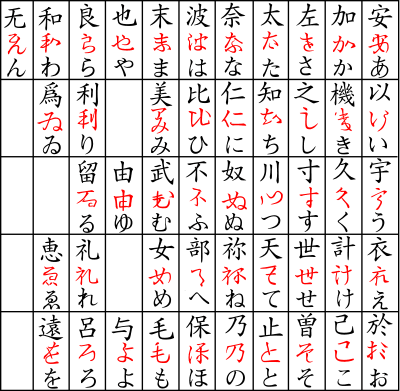
人の心をたねとして
よろづのことのは
とぞなれりける
万葉集の名前の由来となっている歌
「古今和歌集」より
NHK教育テレビをザッピングしていたら表題の番組を見つけました。
5分間の短い放送なので、早速録画して2月27日の放送をながめると
春の花 今は盛りに にほふらむ 折りてかざさむ 手力もがも
大伴家持 (巻17・3965)
春の花は今を盛りと咲き匂っていることだろう
手折って髪に挿す力が欲しいものだ
NHKオンライン
菜の花のいっぱいに広がる画面で、壇ふみさんが読むこの歌が好きになりました。
万葉仮名:漢字の意味とは関係なく、漢字の音訓だけを借用して日本語を表記しようとしたもの。
漢字を用いながらも、日本人による日本人のための最初の文字.
万葉集に由来する名前 :
万葉線 (富山県高岡市・射水市にある路面電車)
万葉まほろば線(奈良県にある西日本旅客鉄道桜井線の愛称) wikiより
中国語の解説
萬葉集维基百科,自由的百科全书跳转到: 导航, 搜索
額田姬王,《萬葉集》第一卷《萬葉集》是現存最早的日語詩歌總集,收錄由四世紀至八世紀4,500多首長歌、短歌,共計二十卷,按內容分為雜歌、相聞、挽歌等
Manyōshū ( manyōshū?, "Collection of Ten Thousand Leaves") is the oldest existing collection of Japanese poetry, compiled some time after 759 AD during the Nara period. The anthology is one of the most revered of Japan's poetic compilations. The compiler, or the last in a series of compilers, is believed to be Ōtomo no Yakamochi. The collection contains poems ranging from AD 347 (poems #85-89)[1] through 759 (#4516),[2] the bulk of them representing the period after 600. The precise significance of the title is not known with certainty.

Manyōgana is an ancient writing system that employs Chinese characters to represent the Japanese language. The date of the earliest usage of this type of kana is not clear, but it was in use since at least the mid seventh century. The name "man'yōgana" is from the Man'yōshū, a Japanese poetry anthology from the Nara period written in man'yōgana.













